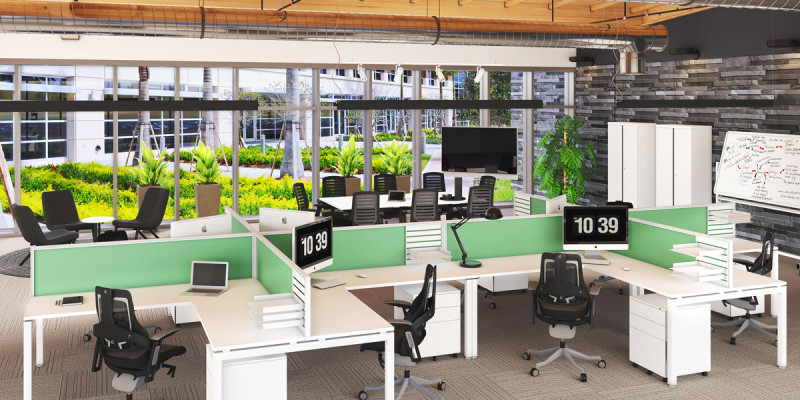If you want to know how to turn your office into green office then you’ve come to the right place. Sometimes it can be difficult to know where to start and there are often assumptions that you have to make some big changes to see big results.
We’re here to tell you that’s not true.
You can start making smaller changes to your office right now.
After all, it’s the little things that add up.
We hope you find these green tips helpful. We certainly did! In fact, we’re gearing up for the 2017 Keep Australia Beautiful Week from the 21-27th of August. How about you? To find out more about how you can get involved in Keep Australia Beautiful Week, visit their website.
You can start with your school, home or office. Sometimes all it takes is a little Rethinking, Reusing and Recycling to make a real difference in the environment.
1. To Go Green, Go Digital
Your office equipment is a large contributing factor to your overall energy bill and can account for up to 20% of your electricity usage.
Laptops use up to 90% less electricity than desktop computers. Though it may not always be practical or possible for all employees to work from a laptop all day every day, at the very least make sure you turn your computer off at the wall before leaving the office.
You can cut down your paper consumption by scanning important files online and setting up file syncing.
We promise you it’s so much easier to manage, sort and search through a neat database of files rather than a filing cabinet.
2. Cut Down Floor Space
Since the hot desking, shared desking and activity based working boom, there has been an increased awareness of how much space we’re using, or not using, during the workday.
On average 30–40% of desks are empty during working hours with each person taking up as much as 7m² of floor space or 20m² for private offices.
A study in Finland revealed that cutting down floor space from 66 desks to 54 desks resulted in the total energy consumption of the office being reduced by 14%. The study recognised that further cutting down floor space to 44 desks would have reduced energy consumption by 33%.
Saving floor space not only results in saved costs, but also significantly reduces carbon emissions.

3. Switch to Eco-friendly Office Supplies
It’s easy to take for granted all the things we use every day without realising it. Take-away coffee cups, plastic packaging, plastic bags, disposable cutlery, lights and even paper towel all contribute to the amount of waste we produce.
In 2001, 19 million tonnes of waste were disposed to landfill, and by 2007 this had grown to more than 21.3 million tonnes . . .
We promise you it’s so much easier to manage, sort and search through a neat database of files rather than a filing cabinet. This will only keep growing every year unless we reduce our overall amount of wastage.
There are a few simple switches you can make that will bring you one step closer to a green office:
- Purchase 3 recycling bins, one for scraps, one for paper and one for recyclable cans & bottles
- Install energy saving florescent or LED light bulbs
- Bring lunch from home rather than eating out
- Install an electric hand dryer rather than paper towels
- Purchase mugs, utensils, plates and reusable containers for the office break-room
- Switch to eco-friendly cleaning supplies without harsh chemicals
4. Improve Indoor Air Quality
It’s bad enough that everyone seems to get sick as soon as someone brings a cold or flu into the office.
The spread of germs isn’t the only contributor to poor air quality in your office.
Inadequate air ventilation, fluctuating temperature, and even formaldehyde gas emissions from your office furniture can make you feel sick. Formaldehyde is a colourless strong smelling naturally occurring gas which at high concentration, can cause eye, nose and skin irritation. Some people are very sensitive to formaldehyde while others are for the most part, unaffected.
In the office environment, exposure occurs primarily by inhaling formaldehyde gas or vapor emitted from office furniture constructed with plywood and laminated veneers, as well as the adhesives that bind them.
Products that meet the E0 formaldehyde standard set by The EWPAA (Engineers Wood Products Association of Australasia) have less than 0.04 formaldehyde parts per million (ppm).
So, when choosing your office furniture look for the E0 classification.

Bonus Tip:
No green office is complete without actual greenery. Oxygen from plants clean the air, reduce dust pollution and greatly improve the air quality in an office. They can even reduce stress and help get oxygen to our brains, allowing us to think more clearly.
Whether it’s recycling at work, turning off lights or switching to environmentally friendly products, implementing any of these steps can dramatically reduce your carbon footprint, energy consumption and even cut down office expenses.
Hungry for more? We’ve assembled 20 more tips for a green office for you.











